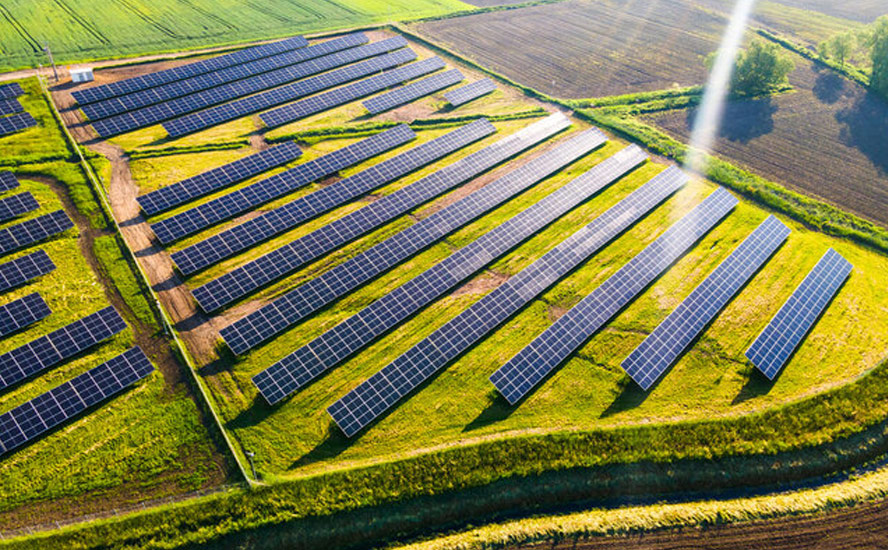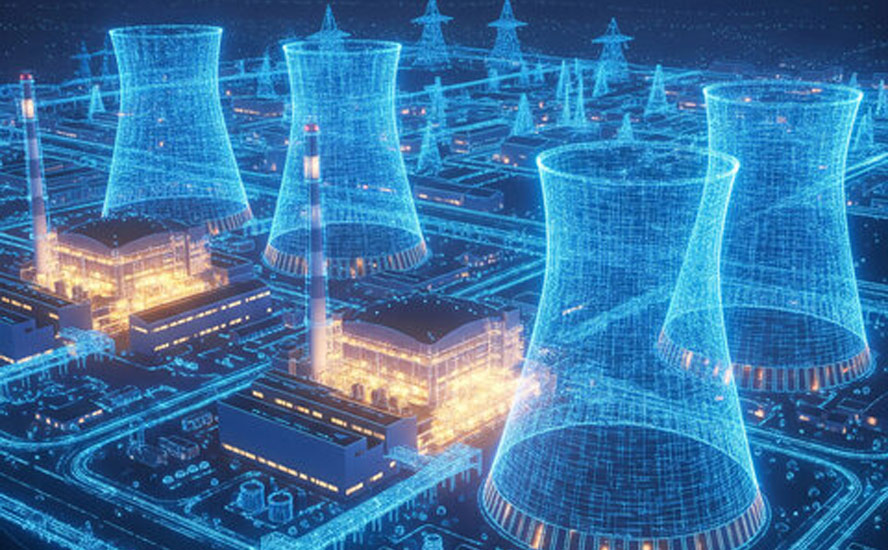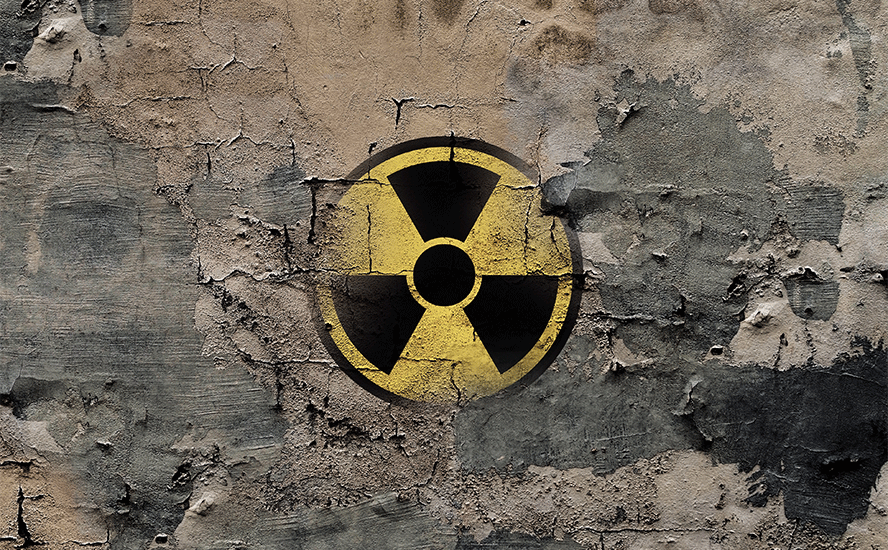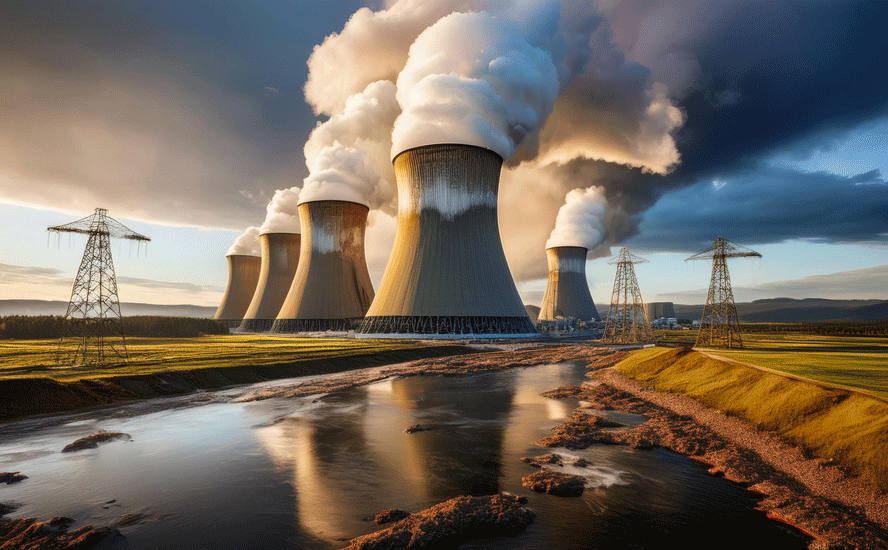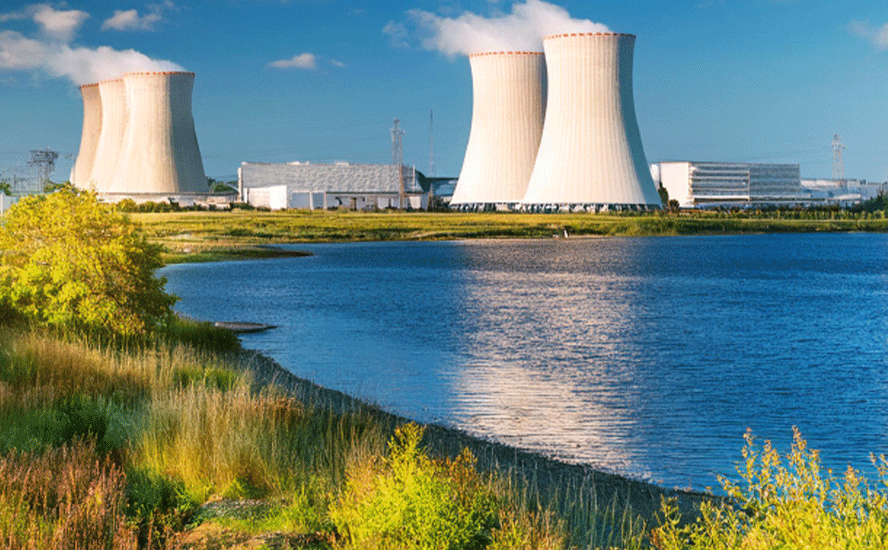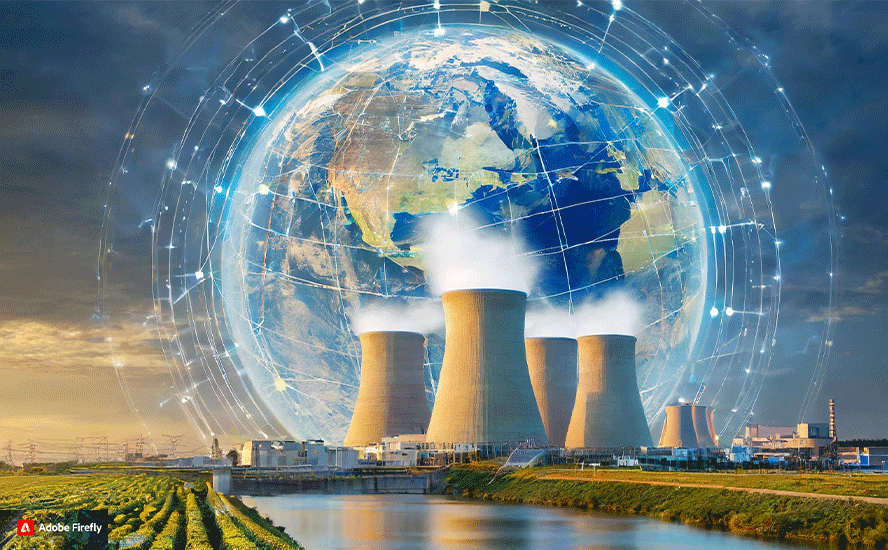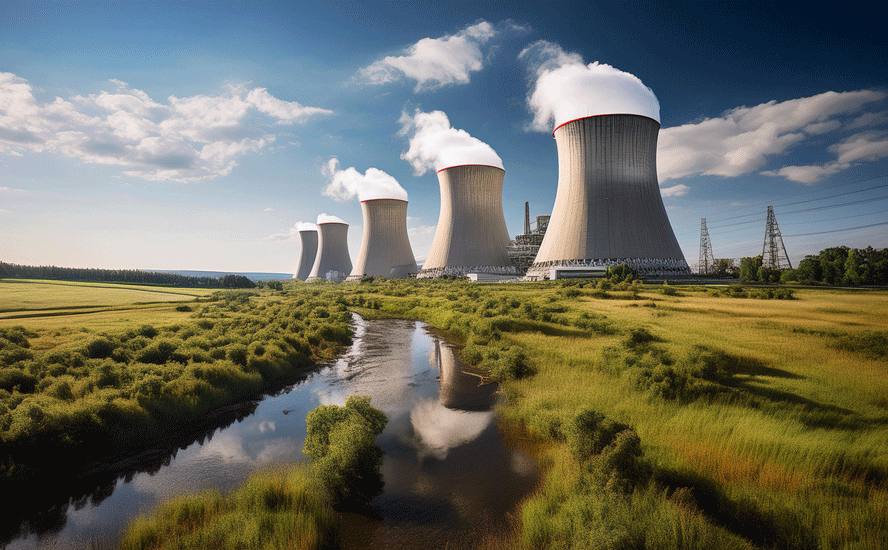Inside Germany’s renewable energy boondoggle – Richard Mills
2023.02.04
For all their successes building Europe’s strongest economy, the Germans have made some pretty dumb moves regarding energy policy.
I first started writing about this in 2011, soon after the earthquake and tsunami in Japan, and subsequent meltdown at Fukushima, forced a re-think of nuclear power.
With startling accuracy, I must say, I suggested that the real proving grounds for nuclear power would not only be in China, India and Russia, as the IEA predicted, but also in Germany and the European Union.
Twelve years later, Germans have re-established their faith in nuclear amid an energy crisis caused, first, by the failure of renewable energy to meet expectations, and second by the war in Ukraine.
Nuclear phase-out…
In 2002, Germany enacted a law to phase out nuclear power, but the government led by then-Chancellor Angela Merkel decided in 2010 to extend the lifetimes of its reactors by 12 years. This was based on the judgment that Germany would not be able to meet its power demand using renewable energy sources – wind and solar power – nor could it meet the government’s ambitious goal of a 40% reduction in carbon emissions by 2020, by burning more coal and natural gas.
Then, playing populist politics and over-reacting to the partial meltdowns in Japan’s Fukushima Daiichi nuclear complex, Merkel’s government immediately shut down almost half of the country’s nuclear power. Germany, overnight, decided 40% of its nuclear power capacity would be eliminated, and removed 8,800 megawatts (MW) from the grid; the remaining 12,700 MW of nuclear-supplied electricity was to be gone by 2022.
The country rapidly approaching that deadline, Germany in 2021 moved to shut down six nuclear plants or 8.5 gigawatts (1GW = 1,000MW). Three of its newest and best plants closed, removing 4.05GW, equivalent to the average electricity consumption of Denmark, from northern Europe’s power grid.
That left three still running. They currently produce around 6% of Germany’s power supply, a far cry from the 1990s, when 19 nuclear power plants produced a third of its electricity.
Germany also plans to take all its natural gas plants offline by 2038.
According to Clean Energy Wire, the country in 2022 got 44.6% of its power from renewables; 20.4% from lignite, a form of coal; 13.5% from natural gas, 6.0% from nuclear and 11.5% from hard coal.

But Germany has had to restructure its energy mix due to a collapse in natural gas supplies from Russia following its invasion of Ukraine. The interruption included the rupture of two gas lines between Russia and Europe last September, a suspected act of sabotage that Germany, Denmark and Sweden are investigating.
Chancellor Olaf Scholz reportedly ordered Germany’s three remaining nuclear plants to remain in operation until April, 2023, to fend off an energy crunch during the coldest months — although Environment Minister Steffi Lemke has apparently promised the country will stick to its nuclear phase-out at the end of that month.
…and revival
The decision to extend the nuclear plants beyond their planned 2022 de-commissioning, is happening amid a remarkable shift in German popular opinion regarding nuclear power.
According to Oilprice.com, while the German Green Party and the Social Democrats have long supported a move away from nuclear energy, it is now seen as preferable to burning coal.
After the Fukushima disaster, most Germans were in favor of a nuclear phase-out; now, over 80% want to extend the lifespan of their existing nuclear reactors. We can only speculate on the public mood, but likely, faced with continued high power bills — despite the government’s recent energy price cap — and more importantly, breathing in polluted air from coal-fired burners, most residents are seeing low-emissions, reliable nuclear power in a new light.
Nuclear power plants produce just 117 grams of CO2 emissions per kilowatt-hour, compared to lignite coal, which, when burned emits over 1,000 grams of CO2/kwh.
Renewable failure
In another nod to nuclear, the energy sources designed to take nuclear’s place in Germany have proven inadequate.
“Energiewiende” (energy transition) refers to Germany’s policy of increasing its share of renewables, and phasing out nuclear power, which before Fukushima amounted to about 25% of the country’s total electricity load.
However Germany’s production of solar and wind power has failed expectations, with the gap between supply and demand having to be met by nuclear and coal, and consumers faced with horrendous power bills.
According to Statista, the average wholesale electricity price in Germany in December, 2022 was 256.66 euros per megawatt-hour, an increase of 16%, year on year. Four months earlier, German power prices hit a record-high 469 euros. Compared to January 2019, that is close to a 10-fold increase!

Statista blames a number of factors on the spike, including increased heating demand due to a cold last winter, a rise in natural gas and coal prices, a drop in wind power generation due to low wind speeds, Russia’s invasion of Ukraine, and last summer’s heat wave in Europe.
Energiewiende was implemented in 2000. Nineteen years later, the average power cost per household had doubled. According to data from IEEE Spectrum, Germans in 2019 were paying USD$0.34 per kilowatt-hour, compared to 22 cents/kwh in France and $0.13 in the United States.
The real kicker though, is what they didn’t get for their money. While in 2000 Germany had an installed solar and wind capacity of 121 gigawatts, with 577 terrawatt-hours generated, in 2019 the country only produced 5% more electricity from renewables, @ 607twh.
The photo below shows what happened in 2021, during the coldest winter in a decade in Western Europe. Snow blanketed millions of solar panels, rendering them useless, along with 30,000 wind turbines.

A 2021 article in Tech Startups quoted a number of experts on Germany’s renewable energy failure, including Professor Harald Schwartz, professor of power distribution at the University of Cottbus:
“With this supply of wind and photovoltaic energy, it’s between 0 and 2 or 3 percent – that is de facto zero. You can see it in many diagrams that we have days, weeks, in the year where we have neither wind nor PV. Especially this time for example – there is no wind and PV, and there are often times when the wind is very miniscule. These are things, I must say, that have been physically established and known for centuries, and we’ve simply totally neglected this during the green energies discussion.”
A team of German academics, led by physicist Manuel Frondel, in a 2009 report had already concluded the following regarding Germany’s record with renewable energies:
Germany’s conversion to green energy imposed “high costs without any of the alleged positive impacts on emission reductions, employment, energy security, or technological innovation… The government’s [subsidies] have in many respects subverted these incentives, resulting in massive expenditures that show little long-term promise for stimulating the economy, protecting the environment, or increasing energy security.”
“Although Germany’s promotion of renewable energies is commonly portrayed in the media as a ‘shining example’ … for the world, we should instead regard the country’s experience as a cautionary tale of massively expensive environmental and energy policy that is devoid of economic or environmental benefits.”
The Frondel report also found that far from creating the much-publicized tens of thousands of jobs, “the net employment balance is zero.”
In 2011 I concluded the path the country will be compelled to take is to import more electricity – either nuclear power from France and the Czech Republic, coal from Poland or natural gas from Russia. Germany did them all.
It wasn’t enough – twelve years later a fourth and a fifth option emerged: burn more a lot more coal and bring in LNG.
Back to coal
Despite energiewiende, Germany’s energy sources in 2021 were dirtier than previously, with hard coal consumption 20% higher from January to September and electricity and heat generation from hard coal increasing by 28%. (Germany has two types of coal, hard coal and lignite). Coal-fired power production is considered to be the worst form of electricity generation for the environment, despite power plant companies’ use of scrubbers and claims of “clean coal”.
The irony is, notwithstanding the country’s disdain for fossil fuels and nuclear energy, if it wasn’t for these traditional base-load sources, deployed to make up for the failure of solar and wind to deliver as expected, Germany would have been facing black-outs.
The prospect of either paying through the nose for heat and light, or freezing in their homes & businesses this winter, has meant that greenhouse gas emissions are less of a priority for energy-starved Europe. According to a report by the Observer Research Foundation, via Oilprice.com, energy supply disruptions triggered by Russia’s war on Ukraine took LNG prices even higher, leaving coal as the only option for dispatchable and affordable power in much of Europe, including the tough markets of Western Europe and North America that have explicit policies to phase out coal.
Coal mines and power plants that closed 10 years ago are being brought back to life in Germany, with other European countries such as Austria, Poland, the Netherlands and Greece also restarting plants.
The article goes on to say that China’s coal imports have been surging, as utilities stockpile material ahead of peak summer electricity demand. China has the largest number of operating coal plants with 3,037, while Germany, the largest economy in the EU, has 63. The price of thermal coal used to generate power has shot up 170% since the end of 2021. It appears that King Coal is back.
According to Reuters, more than a third (36.3%) of the electricity fed into German power grids between July and September came from coal-fired power plants, compared to 31.9% in the third quarter of 2021.
Global coal consumption in 2022 reached a record-high 8 billion tonnes, with Germany one of the highest-consuming countries at 26 million tonnes, a 19% rise over 2021 (IEA figures).
Rather than shutting down 1.6 GW of lignite-fired power plants by the end of 2022, the German government is allowing production until March, 2024.
Furthermore, a “gas replacement reserve” with total capacity of 11.6 GW has been created, including 1.9 GW of lignite and 4.3 GW of hard coal power plants that are allowed to operate until 2024. Reuters adds that the decommissioning of 2.6 GW of hard coal power capacity and 1.2 GW of lignite capacity has been postponed.
LNG
According to Clean Energy Wire, Germany stopped receiving pipeline gas from Russia in late August 2022. The only direct gas links between Russia and Germany, the Nord Stream pipelines, were destroyed by explosions the following month.
This prompted Chancellor Scholz to set up a domestic liquefied natural gas terminal to receive imports, where none existed before. The country’s first floating LNG terminal went online at the end of 2022. Germany can also be supplied via neighboring countries, where the LNG is re-gasified and fed into the natural gas pipeline infrastructure, states Clean Energy Wire.
A brief investigation reveals that Germany sees LNG imports as a panacea to its problem of disappearing Russian natural gas coming via pipelines. As reported by Clean Energy Wire,
Germany has since gone full steam ahead on expanding its import infrastructure and the first terminal went online in December 2022.
Days after Russia invaded Ukraine, chancellor Scholz announced Germany would build two domestic import terminals. Economy and climate minister Robert Habeck said this is necessary to “govern energy supply on our own state territory and guarantee sovereignty.” The German government quickly announced it will co-fund with a 50 percent stake the terminal project in Brunsbüttel, and later announced further support for other projects…
In addition to one or more fixed onshore terminals, the German government plans to lease five so-called Floating Storage and Regasification Units (FSRU) in the short term, two of which were installed by winter 2022/23.
The country is already one of the world’s biggest gas importers and sources some 95% of its consumption from abroad. Natural gas supplied about a quarter of Germany’s energy demand in 2022, the second most important source after oil.
Conclusion
But that doesn’t make it green. While many like to view natural gas as a bridge fuel between fossil fuels and renewables, the reality is it is anything but.
Extracting natural gas through hydraulic fracturing, transporting it to a terminal, and then super-cooling it for transport in tankers, is far from clean; in fact, it may even be dirtier than coal.
To turn it into liquid form, the gas must be cooled to 163 degrees below zero. To do that requires a great deal of power, with massive compression units running 24/7. Where does that power come from? In most cases, the same fracked natural gas is used to run the compression units, which pretty much defeats the purpose of LNG as “clean”.
Natural gas is mostly methane (CH4), a potent greenhouse gas that is over 25 times more efficient than carbon dioxide at trapping heat in the atmosphere. The Global Methane Pledge from COP26 acknowledges that methane is one of the most potent greenhouse gases, responsible for a third of current warming from human activities.
Forgetting all that, the use of fracking technology itself has raised big concerns over the safety of freshwater supplies.
Fracking just one well can use 2 to 8 million gallons of water with the major components being water (90%), sand or proppants (8-9.5%), and chemicals (0.5-2%). One 4-million-gallon fracturing operation would use from 80 to 330 tons of chemicals, and each well will be fracked numerous times. Many of these chemicals have been linked to cancer, developmental defects, hormone disruption, and other conditions.
It’s also been proven that fracking causes earthquakes. A study published in 2016 found that both fracking wells and wastewater disposal wells increase seismicity. A major research project testing seismicity in northeastern BC found a 13-fold increase in the number of earthquakes under 2.5 between August 2013 and August 2014.
If LNG is bad for the environment, and coal is worse, that leaves nuclear as the only form of base-load power generation that produces zero carbon emissions. Wind and solar which can only generate electricity under optimal weather conditions, making them unsuitable for base-load power, and energy storage solutions are still many years away — if they are even viable on a large scale.
Germans have finally realized the folly of renewable energy and are re-establishing their support for nuclear. Unfortunately, people and politicians on this side of the Atlantic continue to cling to out-dated ideas and technologies. Nuclear gets a bad rap but it is bar-none the safest form of power generation. The accidents at Three Mile Island, Chernobyl and Fukushima were all due to human error – poor design, poor site placement and poor training. The technology itself is extremely safe.
Where I live in British Columbia, we get most of our electricity from hydroelectric power. Some time ago, I investigated the possibility of replacing Site C, a $16-billion boondoggle, with small modular nuclear reactors, which Natural Resources Canada calls the “future of its nuclear industry.” (BC has prohibited nuclear plants and uranium mining, but not provinces like Saskatchewan and New Brunswick.)
The Site C dam is slated to provide 1,100 megawatts of capacity – enough to power half a million homes. The same goal could be reached by using a small nuclear reactor capable of delivering 1,000MW (1GW) – at less than a 10th of the cost.
Another way of looking at it, is we could have built 16 reactors, each @ 1GW, for $16B, the price of one dam that is being threatened by earthquakes from fracking, and that if it ever bursts, would flood most of northern BC.
As I predicted, Germany and Europe were the proving ground for renewable energy, and they have failed. Isn’t it about time we stopped seeing solar and wind as the be all end all, and start talking about what is a realistic mix of fossil fuels, nuclear and renewable energy, needed to make the transition to a green economy, one that helps to reduce carbon emissions at a reasonable cost to taxpayers?
Richard (Rick) Mills
aheadoftheherd.com
subscribe to my free newsletter
Legal Notice / Disclaimer
Ahead of the Herd newsletter, aheadoftheherd.com, hereafter known as AOTH.
Please read the entire Disclaimer carefully before you use this website or read the newsletter. If you do not agree to all the AOTH/Richard Mills Disclaimer, do not access/read this website/newsletter/article, or any of its pages. By reading/using this AOTH/Richard Mills website/newsletter/article, and whether you actually read this Disclaimer, you are deemed to have accepted it.
Any AOTH/Richard Mills document is not, and should not be, construed as an offer to sell or the solicitation of an offer to purchase or subscribe for any investment.
AOTH/Richard Mills has based this document on information obtained from sources he believes to be reliable, but which has not been independently verified.
AOTH/Richard Mills makes no guarantee, representation or warranty and accepts no responsibility or liability as to its accuracy or completeness.
Expressions of opinion are those of AOTH/Richard Mills only and are subject to change without notice.
AOTH/Richard Mills assumes no warranty, liability or guarantee for the current relevance, correctness or completeness of any information provided within this Report and will not be held liable for the consequence of reliance upon any opinion or statement contained herein or any omission.
Furthermore, AOTH/Richard Mills assumes no liability for any direct or indirect loss or damage for lost profit, which you may incur as a result of the use and existence of the information provided within this AOTH/Richard Mills Report.
You agree that by reading AOTH/Richard Mills articles, you are acting at your OWN RISK. In no event should AOTH/Richard Mills liable for any direct or indirect trading losses caused by any information contained in AOTH/Richard Mills articles. Information in AOTH/Richard Mills articles is not an offer to sell or a solicitation of an offer to buy any security. AOTH/Richard Mills is not suggesting the transacting of any financial instruments.
Our publications are not a recommendation to buy or sell a security – no information posted on this site is to be considered investment advice or a recommendation to do anything involving finance or money aside from performing your own due diligence and consulting with your personal registered broker/financial advisor.
AOTH/Richard Mills recommends that before investing in any securities, you consult with a professional financial planner or advisor, and that you should conduct a complete and independent investigation before investing in any security after prudent consideration of all pertinent risks. Ahead of the Herd is not a registered broker, dealer, analyst, or advisor. We hold no investment licenses and may not sell, offer to sell, or offer to buy any security.
Legal Notice / Disclaimer
Ahead of the Herd newsletter, aheadoftheherd.com, hereafter known as AOTH.Please read the entire Disclaimer carefully before you use this website or read the newsletter. If you do not agree to all the AOTH/Richard Mills Disclaimer, do not access/read this website/newsletter/article, or any of its pages. By reading/using this AOTH/Richard Mills website/newsletter/article, and whether you actually read this Disclaimer, you are deemed to have accepted it.



